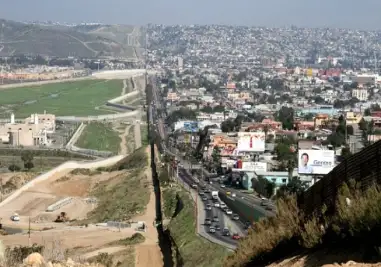Understanding Trump's Expedited Deportation Process for Immigrants
In the early days of Donald Trump's presidency, significant changes to immigration policy became evident, particularly affecting undocumented immigrants. On January 25, 2025, White House Press Secretary Karoline Leavitt announced the commencement of deportation flights, emphasizing the administration's firm stance against illegal immigration.
These changes were initiated with a series of executive orders signed by President Trump on January 20, which empowered the U.S. Immigration and Customs Enforcement (ICE) to carry out enforcement actions in sensitive areas, broaden the range of undocumented immigrants eligible for expedited deportation, and eliminate birthright citizenship.
One notable aspect of this new policy is the expansion of the expedited removal process, designed to accelerate deportations. This procedure targets undocumented immigrants who cannot demonstrate continuous residence in the United States for two years or more.
What is Expedited Removal?Expedited removal allows immigration authorities to deport individuals without a hearing before an immigration judge. This effectively increases federal powers to remove undocumented immigrants swiftly. According to the American Immigration Council, individuals subjected to expedited removal have the right to seek asylum if they express a fear of persecution or torture upon returning to their home country.
However, another measure enacted by Trump included the suspension of flights for refugees who had planned to enter the U.S. This policy signifies a tightening of immigration protocols.
Once an immigration officer determines that an individual falls under expedited removal, the individual is ordered to leave the country. Unlike standard deportation orders, expedited removal orders generally cannot be appealed, resulting in a five-year ban on reentry in most cases.
Individuals with travel documents, such as tourist visas, are subject to the discretion of immigration officers. This includes cases where individuals enter as tourists but subsequently remain in the country to work or live, which is not permitted. Additionally, those who present false documents for entry or impersonate U.S. citizens become permanently inadmissible.
History of Expedited RemovalEstablished in 1996 under the Illegal Immigration Reform and Immigrant Responsibility Act, expedited removal was initially aimed at individuals arriving without proper documentation or attempting entry through fraud. This process applies to those who have entered the U.S. illegally and have been in the country for less than two years, as well as those apprehended shortly after crossing the border.
Traditionally, removals occurred at the border when an individual was caught trying to enter the U.S. without adequate documentation. Under the Trump administration, however, expedited removals are set to occur within the country, targeting undocumented individuals who have resided in the U.S. for less than two years.
The implications of these policies mark a significant shift in the administration's approach to immigration enforcement, extending beyond border control into the interior of the country.









































